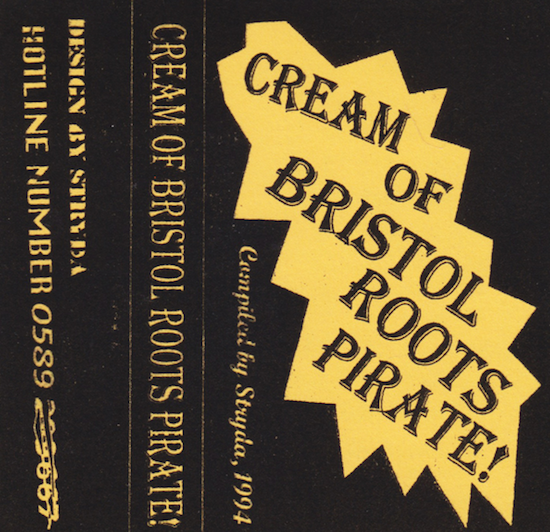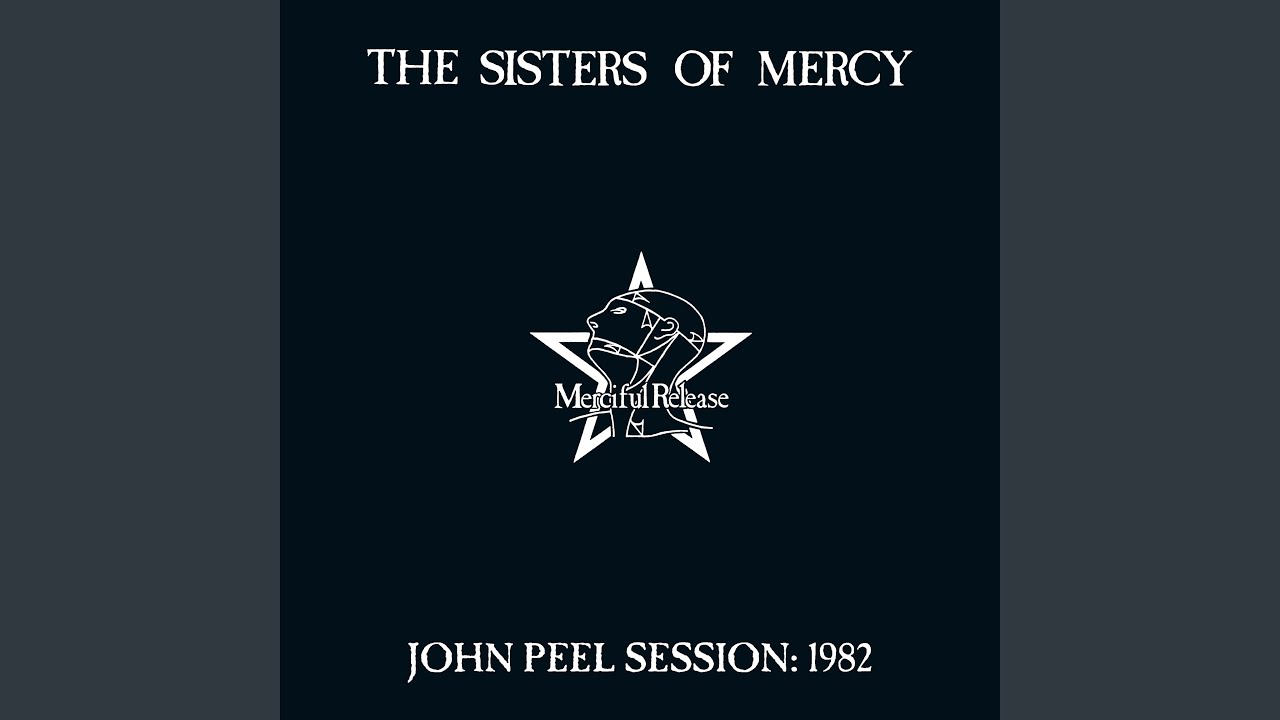82.
PhewPhew
81.
Featuring 19 artists, from seasoned veterans (label founders and early-discovered mavericks like Bruce, Hodge, Simo Cell and Batu), to more recent Livity affiliates (Forest Drive West, Facta, Toma Kami) and the latest roster additions (Azu Tiwaline, Lack, Bakongo, Surgeons Girl), Molten Mirrors is a celebration of Livity’s roots as well as the shape of the Livity sound to come. It is a communal, cross-generational artistic statement by a group of producers from the UK, Australia and Tunisia with different personal trajectories and stylistic approaches when it comes to production, but a shared sense for groove synthesis and introspective dancefloor epiphanies. Do not ask me for a favourite pick, because there are no fillers here, just thrills. Cheers to another ten years!Various ArtistsMolten Mirrors: A Decade Of Livity SoundLivity Sound
80.
Performing in a specially adapted Tower Bridge adorned with a nightclub lighting system, the UK bass wizard and vinyl virtuoso Djrum delivered one of the early contenders for mix of the year. It’s a symbolic place in which the architectural and musical heritage of the city are unified. Djrum’s game-changing mix on 3 decks looks so effortless and sounds so tight, it gives the impression of a digital mix on CDJs. Apart from his matchless technical skills that include impeccable scratching and cutting, inspired effect manipulations and polyrhythmic mixing, the selection in this mix is simply outstanding. He just keeps delivering bomb after bomb from his record box, swiftly transitioning between various tempos, rhythms, genres and eras. There’s so much beauty in the way he blends unlikely tracks and how he builds and releases tension, switching from fast-paced to low tempo tracks without ever losing the flow.DjrumLondon Unlocked: At Tower BridgeN/A
79.
The underground French rap scene, mediated through the internet and a number of hugely dedicated social media accounts and sites, is a space where it’s now possible to find idiosyncratic, and widely diverging, visions and voices that have very little to do with the mainstream, despite the odd name breaking through and gaining wider acceptance. A good primer comes in the form of the La Tape release from a collective of beatmakers called Le Blaze, featuring some of the key names of the ‘new wave’. One of its figureheads, Le Fève (who also recently released the entrancing ‘Mauvais Payeur’) raps about “du futur rap a l’ancienne” (“future rap the old way”) on ‘Le Cible’ over a beat like a piston, and there’s Khali – an old head on young shoulders, with an instantly recognisable voice that buzzes like a despondent wasp trapped under a glass – on the minor-key trap of ‘Bazar’, while Malo laying his sombre tone on the elegiac ‘Innocent’ (“those who hate me are like me… no-one is innocent here”) is among the other treats.Le BlazeLa TapeN/A
78.
To mark 4AD’s 40th anniversary, the label commissioned its current roster – a considerable one that boasts the likes of Tkay Maidza, Jenny Hval, Deerhunter, Big Thief and US Girls to name but a few – to cover a track from one of the artists the label has released across the years. It leaves them with an enviable amount to choose from and throws up some fantastic combinations: Aldous Harding’s woozy exotica-tinged version of Deerhunter’s ‘Revival’ and Tune-Yards’ hypercharged take on The Breeders’ ‘Cannonball’, as well as plenty of total curveballs like Dry Cleaning’s whacked-out cover of Grimes’ ‘Oblivion’.Various ArtistsBills & Aches & Blues (40 Years Of 4AD)4AD
77.
At its best, Loveless is untouchable. Everything works beautifully on what’s still their most sublime piece, the eternally astonishing ’To Here Knows When’, that swishing percussive loop an essential hang-on in the musical equivalent of zero gravity. But when they try the same trick on the pretty-pretty ’Blown A Wish’, all hushed and glowing like it’s drowning in seratonin, what I hear is stillness, and rank good taste (fitting that the song itself recalls the wretchedly nice late-period Cocteau Twins). ’I Only Said’ plays gleeful games with tonality before exploding into the sound of a drugged summer, but then the marvellously windblown sound of ’Come In Alone’ can’t dispel a certain fugginess.My Bloody ValentineLovelessDomino
76.
This mind-numbing seven-CD box set of previously unissued work spans the career of composer and alto saxophonist Julius Hemphill, a founding member of World Saxophone Quartet and a charter member of the Black Artists Guild, the St. Louis counterpart of Chicago’s AACM. The set was meticulously assembled by fellow reedist Marty Ehrlich, a long-time collaborator, who’s spent years building the archive from which the work comes from. It’s seriously diverse, with bracing performances featuring heavies like Dave Holland, Jack DeJohnette, Olu Dara, and many more. A vital window into avant-garde jazz in the 1970s and 1980s by one of its most versatile, idiosyncratic geniuses.Julius HemphillThe Boyé Multinational Crusade for HarmonyNew World
75.
Robert Aiki Aubrey LoweCandyman (Original Motion Picture Soundtrack)Waxwork
74.
Can follow the release of the excellent Live In Stuttgart with an even more sublime performance from the same year. If I had a time-machine, travelling to gigs like this would be how I’d use it at weekends. Unfortunately I don’t, but recordings like this are the next best thing. As the tracks labelled ‘Zwei’ and ‘Vier’ especially demonstrate, the band were clearly an uncanny and powerful force live. It is important to note that these live recordings, being released at this point in time is an event unlike the appearance of archival material from any another band. These are not merely good / bad / subpar versions of songs from a band’s back catalogue but the raw material of Can itself, honed to its most keen edge for live performance but also without the presence of the conscious-mind (usually Holger Czukay) choosing and editing selections from lengthy rehearsals together as on their LP output. This is Can in their natural environment, as they really should be heard – the group mind expanding out into the infinite cosmos. CanLive In Brighton 1975Mute

73.
A 90-minute cassette compiled (not DJ’ed) by Sam Stryda of Dubkasm out of his old Bristol pirate radio recordings, specifically from 1994 and of reggae and dub-oriented shows. So as well as tunes, obviously – mostly universal favourites like ‘Police And Thieves’ or ‘Picture On My Wall’ – there’s ad spots for big sounding nights at the Trinity Centre (which Dubkasm sold out days ago at the time of writing – passing down the torch and that) and vibes-over-slick-professionalism selectors enthusing about the music they’re playing, and in one case the recent release from prison of Nelson Mandela. You can probably find lots of old reggae shows online (although, it should be noted, not this one) but the whole presentation of Cream Of Bristol Roots Pirate! feels really special.DJ StrydaCream Of Bristol Roots Pirate!Tape Echo
72.
The film In The Earth amplifies its stunning and crazed effects with a remarkable score and sound design, for which composer Clint Mansell, working during lockdown in Los Angeles, attached pads to vegetation using a PlantWave midi sprout machine. And in a web of long creaks, heavy breathing and uncommon bird calls, it’s silence that becomes alienating. When the forest grows quiet, Alma knows they’re being watched. Mansell’s synth score links In The Earth with horror classics like The Fog, They Live or Assault On Precinct 13, where director John Carpenter would himself sit down with a synthesiser to create the music.Clint MansellIn The Earth (Original Music)Invada
71.
It wouldn’t be a round-up of the year’s best reissues without a mention for Dark Entries, and this compilation of DIY ’80s pop from the Mexican underground music scene underlines just why the label is so loved by so many, offering a perfect 10-track introduction to a sound and scene I’d never have thought of exploring before. After all, as Dark Entries’ write-up for the compilation points out, “while synth pop and obscure electronics from Europe and the United States have been extensively documented, much less attention has been paid to such offerings from the periphery.” Highlights come in the starry, quintessentially ’80s synthpop of Vandana’s ‘Cambios En El Tiempo’ and Década 2’s decidedly more moody New Beat-referencing ‘Alfabeto (Cold Version)’.Various ArtistsBack Up: Mexican Tecno Pop 1980-1989Dark Entries
70.
The Sisters Of Mercy’s first Peel session in 1982 featured an anaemic ‘Alice’ but a beefy, low-slung ‘Floorshow’ while the most interesting thing about it was the rare and rickety, ‘Good Things’. Everything really comes together for their David ‘Kid’ Jensen session the following year, with electrifying cuts taken mainly from the high watermark Reptile House EP (Spiggy’s inability to hit some of the high notes notwithstanding) and an ‘almost cooked’ cover of Dolly Parton’s ‘Jolene’ thrown in for good measure. Everything nearly ended with a whimper in 1984, thanks to inter-band tensions and escalating drug use, and you can hear it in the death march through plodding singles ‘Walk Away’ and ‘No Time To Cry’. However, the Sisters left Maida Vale for the last time, golden, after finally laying down a studio cover of Hot Chocolate’s ‘Emma’, a brilliant version which shares the same berserk passion as the original and preempts some of Eldritch’s Floodland-era bombastful brilliance.The Sisters of MercyBBC Sessions 1982 – 1984Merciful Release
69.
Feed Me Weird Things just reminds me of a very specific time of my life. It fused together so many things I was interested in (jazz, jungle, breakbeat, ambient music, electronica, classical music, programming etc) in a way that was so inspiring and so liberating, because I didn’t think it was possible for all of these things to exist in one place and for it to feel so natural. It’s also quite a dark record, much darker than most of his other ones. ‘UFOs Over Leytonstone’ was a particular turning point in terms of inspiration for my own music, and it’s still a track I return to all the time. I love how it became re-contextualised years later with the release of ‘Tundra 4’. I love that idea of returning to something like that. It must mean that the first version of that track really meant something, or was some kind of blueprint.SquarepusherFeed Me Weird Things (25th Anniversary Edition)Warp
68.
Marco ShuttleRhythm Büro Podcast 016N/A
67.
One of the achievements of KID A MNESIA is to give equal footing to the overlooked sibling that is Amnesiac, an album that is, to my mind at least, a more rewarding treasure trove than the sparse but nevertheless sublime Kid A. There is something of the attic to Amnesiac. It’s a lost book in a derelict library in a far distant post-literature time. Joining the two albums, you realise how remarkably productive this troubled period of writing and recording was for the band. There are so many astonishing moments but crucially, perhaps through their studies of electronic, classical, jazz and kosmische Musik, they are allowed space to breathe to build. The band learned not just the power of rhythm (evidenced in ‘The National Anthem’, ‘Idioteque’, ‘Packt Like Sardines In A Crushd Tin Box’ and elsewhere) but the power of restraint and release.RadioheadKID A MNESIAXL
66.
Assembled quickly, and intentionally left unpolished and unrefined, this mixtape captures the Irish experimental music community in a chrysalis state, transitioning from one year into the next with an act of shared creativity and consciousness. With the Irish landscape as its backdrop, and the immovable deadline of Saint Brigid’s day as its aesthetic prompt, Lee Lines (Landscape Mixtape) proved to be the perfect soundtrack for the start of 2021: one composed by a countrywide community, summoning its own rebirth after a year of uncertainty and separation.Various ArtistsLee Lines (Landscape Mixtape)The Department Of Energy
65.
Is Amanita the best Bardo Pond album? We’d advise tracking them all down, just to make sure. Their second studio album, and first for Matador, is certainly a contender for the mushroom-shaped crown. It’s also as good a place to start as any for those yet to discover the Philadelphians’ unrivalled ability to drug their listeners’ ears. The key ingredients are all here. Distortion that’s denser than the kid in the dunce’s cap. Isobel Sollenburger’s floaty vocals (and occasional flute playing). A rhythm section that’s perhaps as stoned as the rest of them. “Hey Mom, when I grow up, I want to be a fish…” Okay, then. They don’t make music as heavy and psychedelic and dimension-splittingly beautiful as this anymore. Well, actually, Bardo Pond do because – thank Piltzintecuhtli! – they’re still going. No one else can match their narcotic, fishy ways.Bardo PondAmanita (25th Anniversary Edition)Matador
64.
A sister release to 2017’s Sounds Of Sisso compilation, which likely introduced many to Tanzania’s frenetic singleli sound, Nyege Nyege Tapes’ Sounds Of Pamoja offers a look into Dar es Salaam’s other key studio for the genre. As with Sounds Of Sisso, this latest peek into the singeli world is intense, mind-blowing and relentless, as tempos push north of the 200 BPM mark, various chipmunk-like samples waft in and out of the mix, and all kinds of other sounds compete for your attention.Various ArtistsSounds Of PamojaNyege Nyege Tapes
63.
You get a lot of bang for your buck when opening BMG’s Sabotage Super Delux box set. The LP is newly mastered from tape and the sleeve has been reproduced in that lovely ‘linen’ texture that you get on the original pressing of Joy Division’s Unknown Pleasures. There’s a triple live album, North American Tour Live ‘75, with blazing versions of ‘Supernaut’, ‘Spiral Architect’ and ‘Sabbra Cadabra’ among others. There’s a lovely extra touch in the replica/reissue of the Japanese 7” of ‘Am I Going Insane (Radio)’. There’s a replica 1975 tour poster and a nice reproduction of the tour programme which was on sale at Madison Square Gardens, with great photos (Iommi in full-on LOTR mode, Ozzy on a horse, Geezer appearing out of a hedgerow, Ward in a box car in hobo mode).




